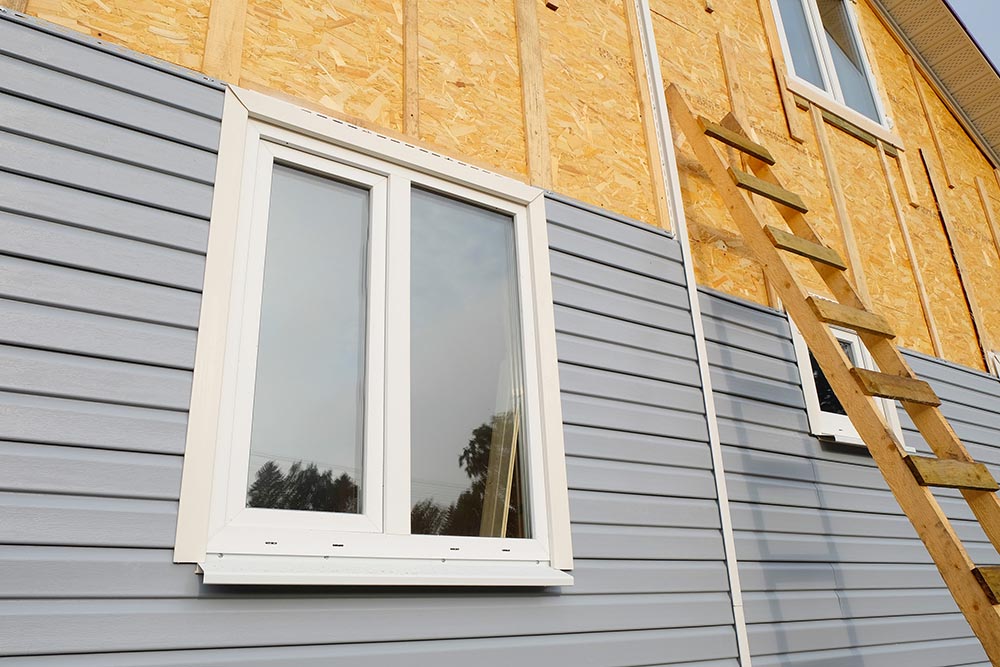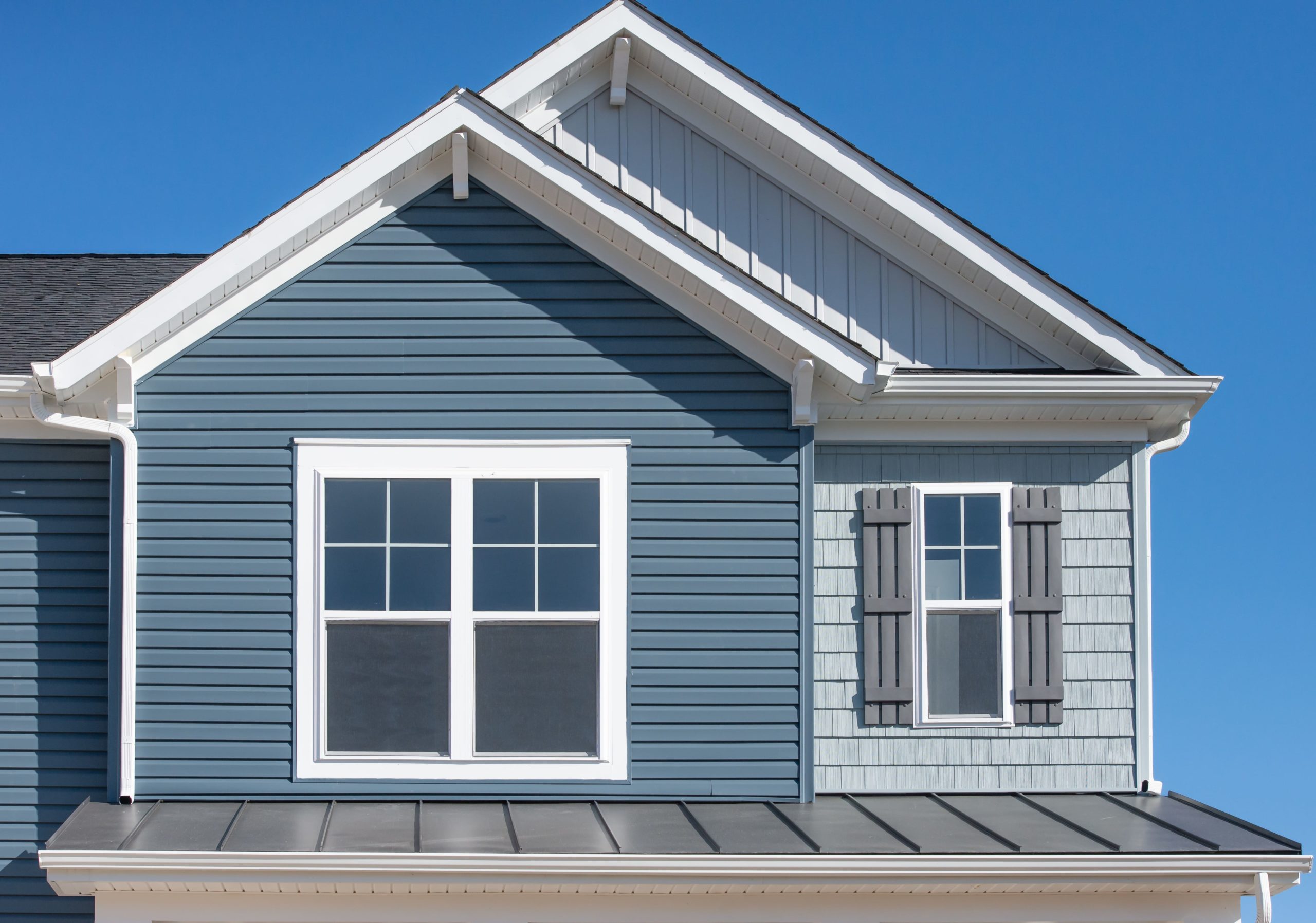House siding services: Leading Styles in Siding for Modern Homes
Hardie board siding: Experienced Exterior Cladding Specialists Can Enhance The Sturdiness And Look Of Your Home
Kinds Of Siding Products
When picking the perfect siding material, siding contractors typically navigate a maze of choices, each with its own personality and charm. However have you ever questioned why some homes seem to use their exterior like a customized fit, while others appear like they've obtained a costume? The secret lies in the product.
Wood Siding: Traditional with Character
Wood siding has this timeless attraction, similar to cozy cottages and rustic cabins. It breathes heat and authenticity, however it requires care, similar to a valued book that needs mild handling. Specialists often advise property owners: "Wood sings a lovely tune, however only if you keep it well-tuned."
- Types: Cedar, Pine, Redwood
- Pros: Natural insulation, visual adaptability
- Cons: Susceptible to moisture, needs regular maintenance
Vinyl Siding: The Popular Workhorse
Ask any siding professional about vinyl, and you'll find out about its resilience and ease. It's like the trustworthy good friend who's always ready to assist, rain or shine. Vinyl does not demand much attention, yet it offers a large combination of colors and designs. Is convenience worth the sacrifice of that authentic texture?
- Toughness: Resists fading, splitting, and insects
- Setup: Faster and more affordable
- Environmental impact: Less eco-friendly due to plastic composition
Fiber Cement: The Modern Chameleon
Picture a siding product that mimics wood's appeal but chuckles off wetness and fire. Fiber cement is that shape-shifter in the siding world, impressing contractors and homeowners alike. It's a mix of cement, sand, and cellulose fibers-- crafted to sustain.
| Feature | Fiber Cement | Wood | Vinyl |
|---|---|---|---|
| Maintenance | Low | High | Low |
| Sturdiness | High | Moderate | Moderate |
| Appearance | Differed textures | Natural grain | Smooth or wood-like |
Metal Siding: Industrial Edge
Metal siding often captures the eye with its streamlined, contemporary vibe. It's the strong declaration piece for modern homes. It can be a double-edged sword. While it boasts amazing durability, its cold touch and noise during rainstorms can surprise the unprepared.
- Materials: Aluminum, Steel, Copper
- Strengths: Fire resistance, low maintenance
- Obstacles: Damage susceptibility, thermal conductivity
Which product fits your home's story? Siding professionals advise us that understanding these options is more than a checklist-- it has to do with matching personality, climate, and way of life. Your home's exterior is the first chapter in the tale you inform the world.
Setup Strategies and Finest Practices
When it concerns siding installation, the devil really hides in the details. Have you ever discovered a home where the siding appears to peel or warp after a single season? That subtle flaw typically traces back to poor attachment or overlooked wetness barriers. Accuracy isn't just a high-end-- it's the backbone of resilience. The concern is: how can contractors guarantee flawless execution whenever?
Mastering the Art of Attaching
One of the most ignored aspects in siding work is the option and positioning of fasteners. Screws or nails that are either too tight or too loose can cause panels to buckle or end up being loose, specifically with products like vinyl or fiber cement. A professional tip: always leave a slight space to enable natural growth and contraction. This tiny breathing space avoids warping and cracking down the line.
- Usage corrosion-resistant fasteners to prevent rust spots and deteriorating in time.
- Install nails at a slight angle to enhance holding power.
- Never ever drive fasteners too deep; countersinking ruins the siding's capability to bend.
Wetness Management: The Unnoticeable Guardian
Did you understand that improper wetness control is the silent assassin of siding systems? Water intrusion, frequently undetectable initially, can cause underlying rot and mold. A skilled siding specialist never avoids setting up a top quality weather-resistant barrier beneath the siding. This layer click here imitates armor, fending off wetness while permitting vapor to escape.
| Common Moisture Security Techniques | Why It Matters |
|---|---|
| Home Wrap Installation | Prevents rain infiltration and boosts energy effectiveness |
| Flashing Around Openings | Redirects water far from windows, doors, and corners |
| Weep Holes in Bottom Trim | Allows caught wetness to escape, preventing buildup |
Precision Cutting and Alignment
Ever wonder why some siding tasks look like artworks while others appear haphazard? The secret depend on precise measuring and cutting. Using laser levels instead of traditional tools can save hours and ensure perfectly straight lines. Remember, siding isn't almost covering walls-- it has to do with improving curb appeal with smooth positioning.
- Measure twice, cut as soon as: double-check all measurements before trimming.
- Usage sharp blades for tidy edges-- dull tools trigger splintering.
- Keep consistent panel spacing to enable for thermal movement.
In the end, the craftsmanship behind siding setup reflects a deep understanding of products and environment. How frequently do you pause to think about the unnoticeable work beneath those panels? It's a dance between resilience and aesthetic appeals, carried out best when proficiency satisfies attention to every minute information.
Repair And Maintenance Tips for Siding
Ever noticed how a tiny fracture in your siding can quickly grow out of control into a full-blown headache? Neglecting that small fissure may appear harmless, however water intrusion and insect seepage lurk just underneath the surface area, waiting to wreak havoc. The trick to protecting your home's exterior lies in alertness and timely intervention.
Finding Problem Before It Escalates
Regular evaluations, particularly after severe weather condition, are non-negotiable. Look for:
- Loose panels that might flap or shift in the wind.
- Staining, which typically signals wetness caught behind the siding.
- Peeling paint or bubbling, a sure sign of underlying damage.
- Deforming or swelling, especially on wood or fiber cement siding.
One homeowner as soon as dismissed a small bulge, only to discover weeks later on that termites had made themselves quite comfortable behind the siding. Moral of the story? Don't let subtle symptoms fool you.
Proactive Repair Methods
When it comes to repair work, time is your ally. Delaying the fix frequently means more intrusive-- and costly-- work later. Here's a detailed approach that siding specialists swear by:
- Tidy the location completely to examine the complete scope of damage. Dirt and debris can mask the real level.
- Remove harmed sections carefully to avoid harming surrounding materials.
- Usage suitable replacement pieces to guarantee seamless combination and preserve structural integrity.
- Seal all joints and edges with premium, weather-resistant caulk or sealant.
- Repaint or refinish to bring back protection and curb appeal.
Insider Tips for Durability

Here are some lesser-known techniques of the trade that can extend the life of your siding:
| Pointer | Explanation |
|---|---|
| Keep correct drain | Make sure rain gutters and downspouts direct water away to prevent wetness buildup behind siding. |
| Aerate your attic | Excellent air flow minimizes humidity levels that can degrade siding materials from the within out. |
| Cut vegetation | Keep shrubs and tree branches at bay. Plants can trap wetness and invite pests. |
| Utilize a soft brush for cleansing | Avoid high-pressure cleaning, which can damage siding surface areas and force water into joints. |
When to Call an Expert

Not every flaw calls for a specialist, but some signs are unmistakable:
- Large-scale warping or sagging that compromises siding alignment.
- Relentless wetness stains that withstand drying.
- Noticeable mold or mildew growth suggesting ongoing water intrusion.
- Damage impacting insulation or structural components behind the siding.
Remember, taking on small repairs yourself can save money, however recognizing when professional intervention is essential secures your financial investment. After all, siding does more than dress up your home-- it serves as a fortress against the components.
Environmental Impact and Sustainability Factors To Consider
When selecting siding, have you ever paused to think about the environmental footprint left behind? It's more than just visual appeal or durability-- what lies beneath the surface frequently narrates about resource use and waste. Many siding products come with surprise environmental costs, from the extraction of raw products to producing emissions and disposal hurdles.
One anecdote from the field stands out: A house owner picked vinyl siding for its low in advance cost however didn't understand that its non-biodegradable nature would make complex disposal decades later. That shiny outside masked an environmental gamble, prompting professionals to reconsider suggestions on sustainable alternatives.
Product Selection: Beyond Surface Appeal
Wood siding typically gets appreciation for its renewability, however not all wood is developed equivalent. Sourcing from sustainably handled forests can drastically decrease environmental pressure. On the other hand, composite sidings may include recycled material, but the production procedure could still be energy-intensive. What's the balance?
- Recycled material percentage: The greater, the much better for sustainability metrics.
- Embodied energy: How much energy is utilized from basic material extraction through to setup?
- Longevity and maintenance: Materials that last longer decrease waste and replacement frequency.
Setup and Waste Management Tips
Experienced siding specialists typically highlight decreasing waste on-site. Instead of a scattergun approach, precise measurements and pre-cutting can conserve substantial product. Ever noticed stacks of scrap discarded hastily after installation? That's lost chance-- not simply for your wallet, however for the planet.
- Strategy cuts carefully to decrease offcuts.
- Reuse or recycle remaining pieces wherever possible.
- Pick fasteners and adhesives with low unpredictable natural compound (VOC) emissions.
Sturdiness's Double-Edged Sword
Here lies a paradox: durable siding indicates less regular replacements, which is good for sustainability. But some highly resilient products require energy-intensive production or consist of chemicals damaging to communities. How to select wisely? In practice, contractors weigh the whole lifecycle impact instead of simply the surface advantages.
| Product | Environmental Advantage | Consideration |
|---|---|---|
| Cedar | Naturally degradable, eco-friendly | Needs maintenance, potential for chemical treatments |
| Fiber Cement | Lasting, fire-resistant | High embodied energy, dust issues throughout cutting |
| Vinyl | Low maintenance | Non-recyclable, toxic when burned |
Ultimately, the art of siding installation intertwines with eco-friendly mindfulness. Can your siding be both a protective shield and a peaceful guardian of natural deposits? With thoughtful choices and professional workmanship, it can.